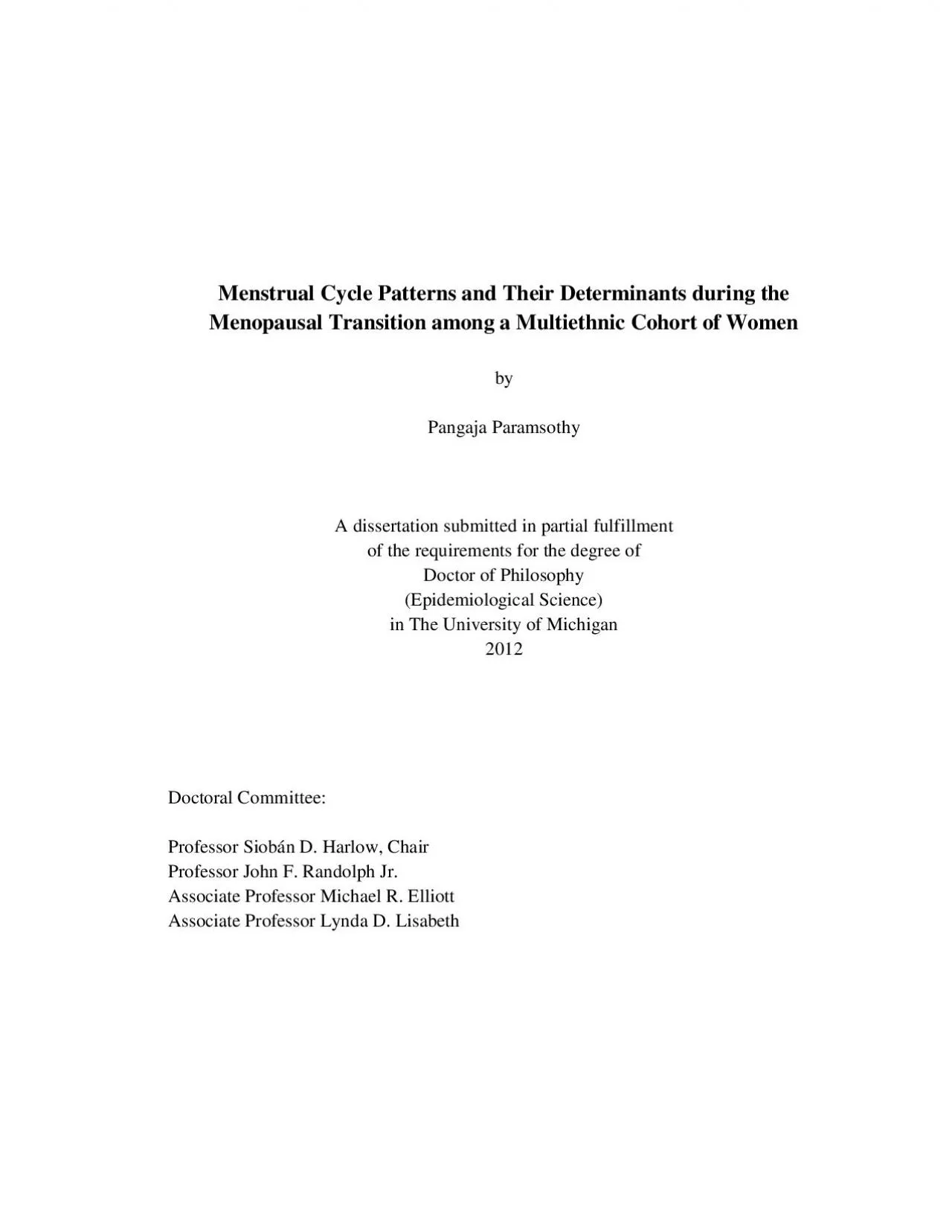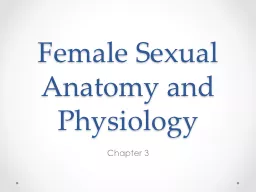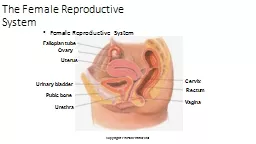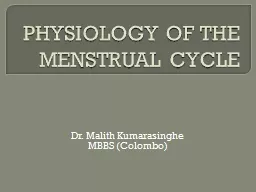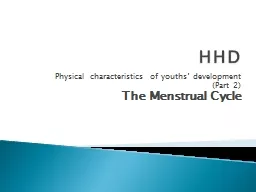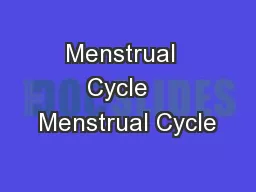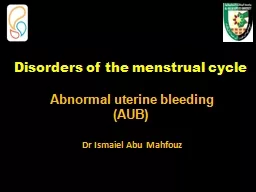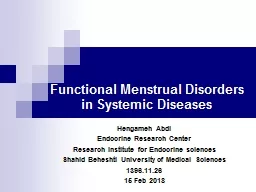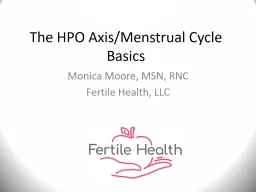PDF-Menstrual Cycle Patterns and Their Determinants during the
Author : molly | Published Date : 2022-08-31
Menopausal Transition among a Multiethnic Cohort of Women by Pangaja Para m s othy A dissertation submitted in partial fulfillment of the requirements for the degree
Presentation Embed Code
Download Presentation
Download Presentation The PPT/PDF document "Menstrual Cycle Patterns and Their Deter..." is the property of its rightful owner. Permission is granted to download and print the materials on this website for personal, non-commercial use only, and to display it on your personal computer provided you do not modify the materials and that you retain all copyright notices contained in the materials. By downloading content from our website, you accept the terms of this agreement.
Menstrual Cycle Patterns and Their Determinants during the: Transcript
Download Rules Of Document
"Menstrual Cycle Patterns and Their Determinants during the"The content belongs to its owner. You may download and print it for personal use, without modification, and keep all copyright notices. By downloading, you agree to these terms.
Related Documents

